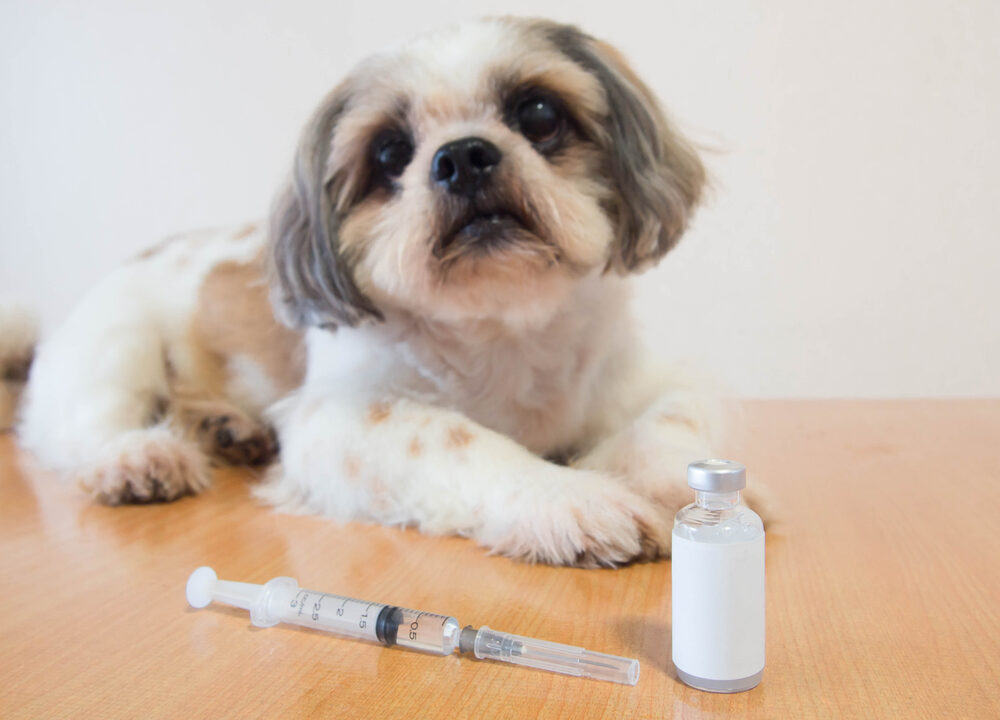
There are many warning signs of diabetes in dogs. These symptoms include increased thirst and an insatiable appetite. The insatiable appetite is caused by a lack of insulin, which is the hormone produced by the pancreas to control blood sugar levels. Your dog may think it is starving but is actually suffering from an imbalance of insulin in its blood. Weight loss in dogs is also a common symptom of diabetes. However, sudden weight loss can also be caused by other conditions, such as cancer, liver or kidney disease.
Cushing's disease

One of the early signs of Cushing's disease in dogs is an increased thirst and urination. Your pet will have to go outside more frequently to relieve itself. Their skin will also be dry and prone to infections. If your dog has any of these symptoms, he or she should be taken to the veterinarian for further testing. The vet may prescribe antifungal shampoo or antibacterial wipes.
Cushing's disease in dogs is caused by an overproduction of the hormone cortisol in the dog's adrenal glands. This hormone affects many organs in the body. In addition, too much cortisol suppresses the immune system and increases the risk of sickness and infection. This makes it essential to detect Cushing's disease signs in dogs early.
The pituitary gland is located at the base of the brain and is a pea-sized gland. This gland produces a hormone called adrenocorticotropic hormone, which stimulates the adrenal glands to produce cortisol. Adrenal tumors can affect either one or both of these glands. A tumor on either of these glands can lead to Cushing's disease in dogs.
Although there is no cure for Cushing's disease, diagnostic tests are essential to prevent further damage. Blood tests can also be helpful to detect symptoms before they develop.
Insulin-resistant diabetes
The first step in treating insulin-resistant diabetes in dogs is to provide regular insulin injections. This is crucial to maintain normal blood sugar levels. When insulin levels rise or fall too quickly, dogs can experience life-threatening complications. While a daily injection of insulin is necessary, overdosing or underdosing can also cause serious problems.
Overweight dogs are at an increased risk of developing diabetes, as are those with hyperadrenocorticism or hypothyroidism. Treatment with glucocorticoids is also associated with increased risk of diabetes. Some breeds of dogs are especially at risk. Border Collies and Tibetan Terriers are known to be prone to diabetes.
Diabetes treatment for your dog may involve several days in the hospital. Especially if a dog has stopped eating or drinking, they may need intensive care. The vet may prescribe insulin and will work with you to determine the correct dose. It is a good idea to invest in a reliable home monitoring unit so you can keep track of your dog's glucose levels. In addition to a reliable home glucose monitor, veterinarians will show you how to test your dog's blood glucose levels to determine insulin-related complications.
After insulin boluses, blood glucose levels were maintained for four minutes. Then they gradually decreased over the next 17 minutes. Three dogs had their test prematurely because they developed clinical signs of hypoglycemia. A mean calculated kITT was 8.0 (se 0.34)% min-1.
Hypoglycemia

If your pet has hypoglycemia, the best course of action is to give him a glucose tablet or feed him a normal meal. If the condition is more severe, your pet should be hospitalized. Your veterinarian can administer an intravenous fluid therapy with dextrose to raise blood glucose levels. The dextrose in the IV is absorbed by the body and is used as an insulin substitute. Medications for hypoglycemia include oral glucose supplementation, dextrose infusion, and insulin.
While hypoglycemia is a common symptom of diabetes, it is not a defining feature. It can occur in any breed of dog, but puppies who are not used to eating can be more susceptible. When the condition is severe, the symptoms can be life-threatening. In many cases, emergency intervention is required.
If your dog is diagnosed with diabetes, it is important to follow the veterinarian's treatment plan and monitor their blood glucose levels closely. Although most dogs are clinically healthy, it is still best to take precautions to prevent complications. Your goal is to keep your dog's blood glucose levels between 65 and 120 mg/dl. This will make them feel better now and less likely to have diabetes-related problems later.
Symptoms of hypoglycemia in dogs include loss of appetite and inability to eat their favorite foods. To catch these symptoms early, make sure to follow a strict feeding routine. Other symptoms include twitching, which is a small repetitive muscle contraction. This could occur when a dog is scared or anxious. If your dog displays twitching symptoms, visit your vet immediately.
Excessive thirst
Excessive thirst in dogs can be a symptom of many different health problems. It's important to determine what is causing it and then consult with a veterinarian. However, excessive thirst and increased urination are not necessarily related. Your veterinarian will perform a nose-to-tail physical exam and suggest tests based on that exam.
Diabetic dogs are at an increased risk of thirst. Moreover, they tend to be overweight. This condition is most often found in middle-aged and older dogs. The disease is more likely to affect female dogs than males. Some breeds are more prone to developing diabetes than others.
Diagnosis of diabetes in dogs requires a series of laboratory tests to rule out other possible causes of your dog's excessive thirst. These tests include a complete blood count, chemistry profile, liver parameters, and urinalysis. Diabetic dogs are more likely to have lower urine concentration than their non-diabetic counterparts. If these tests are negative, your veterinarian will likely refer you to a specialist for further testing.
A high level of blood sugar is another sign of diabetes in dogs. When the level of glucose in the blood is too high, the body turns to other fuel stores like muscle and fat. The result is that the diabetic dog is more likely to drink water at every chance. In addition to thirst and increased urination, a dog with diabetes will experience unexplained weight loss.
Weight loss

Although insulin therapy is the mainstay of diabetes management for dogs, diet and exercise can be beneficial as well. Losing weight can reduce blood sugar and increase the body's ability to use insulin. A veterinarian can recommend a diet that is appropriate for dogs with diabetes based on activity level and weight. Most vets recommend a high-fiber, low-fat diet that has fewer calories. In addition, a high-fiber diet will help reduce your dog's water intake.
Keeping your dog's weight at a healthy level is essential to the health of your dog. Being lean and trim can help your dog have a long and healthy life. In addition to helping your dog feel better, losing weight can make the cells in the body better use insulin, which keeps blood sugar levels under control. By keeping blood sugar levels normal, you'll minimize your dog's risk of diabetes-related complications.
In addition to keeping blood sugar levels stable, a diabetic dog's diet needs to contain high-quality protein. High-quality protein should account for 18 to 25 percent of dry matter. This can help your dog avoid muscle catabolism and has been shown to decrease the risk of diabetic nephropathy. Protein should also make up 30 to 45 percent of calories. Carbohydrates are also an important part of a diabetic dog's diet. While the number of carbs should be moderated, complex carbohydrates are best.
A diabetic dog should not eat snacks in between meals. It should eat two or three meals a day. It is also important to avoid treats containing sugar. Homemade dehydrated meats and canned pumpkin are good options. For snacks, keep your dog's meals small and frequent. You should check in with a veterinarian periodically for adjustments.
Hair loss
Diabetes in dogs can manifest in several different ways. It can be triggered by the pancreas overproducing too much insulin, or it can be caused by viral diseases. Diabetes is also related to genetics, and some breeds are more likely to develop diabetes than others. However, according to a 2003 study, mixed-breed dogs are not more likely to develop the disease than purebred dogs.
The veterinarian may order diagnostic tests, which typically include a smear and culture of the skin. This will help determine if there is an infection. If a bacterial or fungal infection is the cause, further testing may be necessary. Other tests may include a skin biopsy to rule out an inflammatory or cancerous cause of hair loss. In severe cases, blood and urine samples may also be necessary.
There are many different causes of hair loss in dogs. Some hair loss is hereditary. Other cases result from infections, parasites, or excessive grooming. Regardless of the cause, a dog's loss of hair should not be ignored. There are several types of treatment for balding in dogs. Some of these treatments include antibiotics, antifungals, or steroid therapy.
Hair loss is often accompanied by other symptoms, including irritability, itchiness, and skin changes. It may also smell foul. Aside from diabetes, hair loss may also be caused by contact dermatitis or an allergic reaction. Common allergens include certain drugs, dust, and chemicals, as well as various plants.










